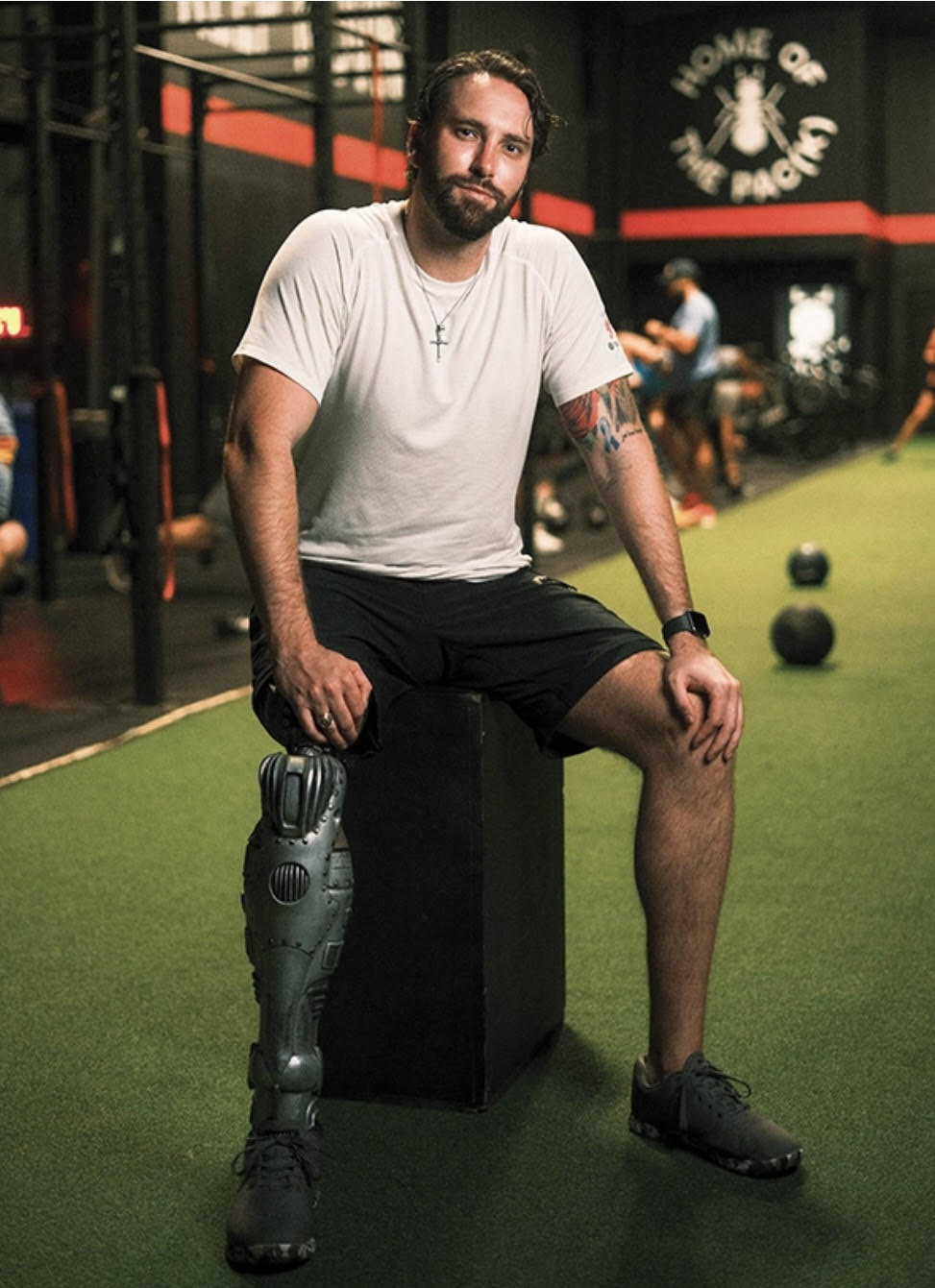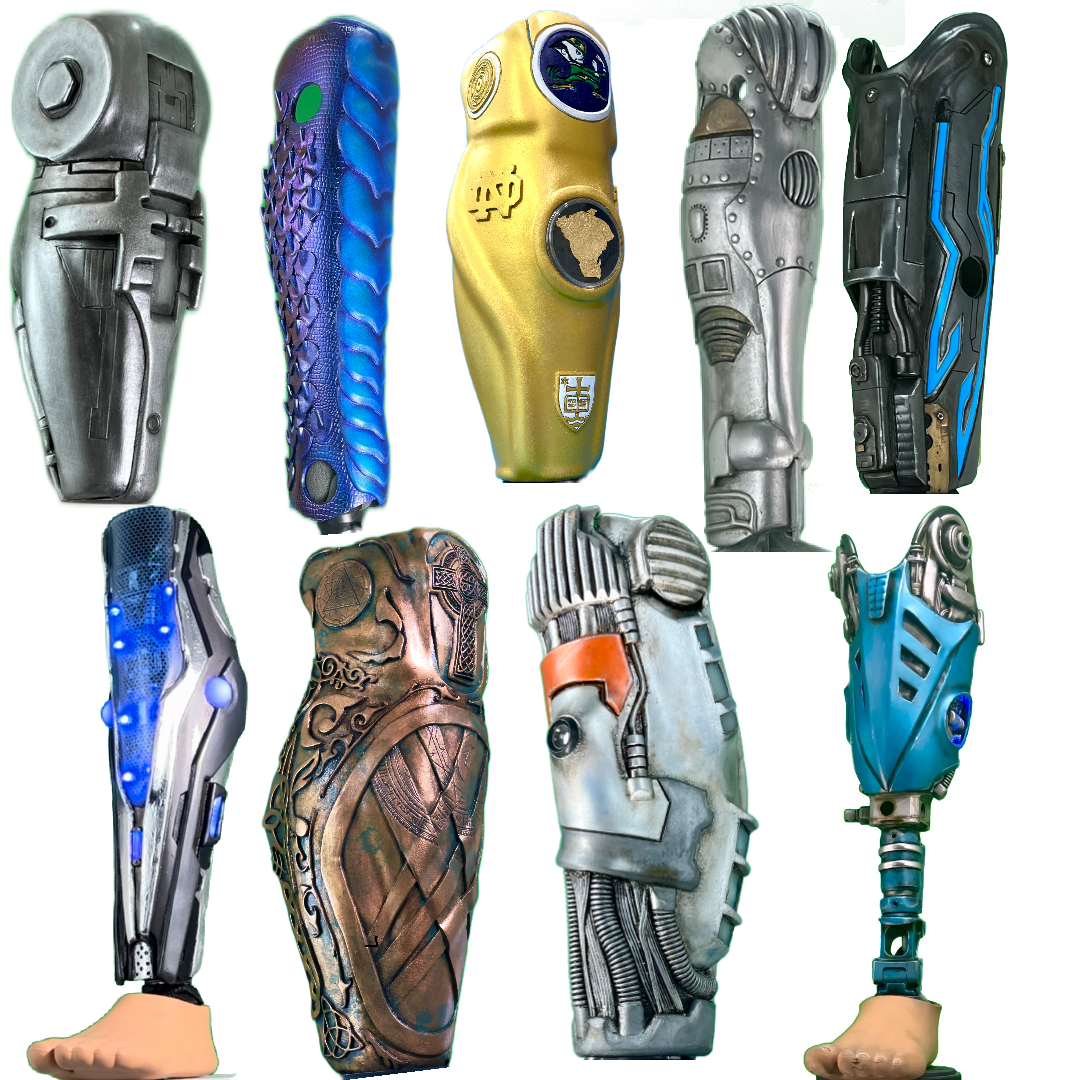When he was 27 years old, the hardware used to treat Nicholas Harrier’s childhood osteosarcoma (a type of bone cancer) became infected, necessitating an above-knee amputation. Upon receiving his prosthetic leg from Bay City, Michigan’s Oakland Orthopedic, however, Harrier put the unit through its paces—by, among other things, leaping down flights of stairs.
Oakland Orthopedic soon offered Harrier a job. Harrier has gone on to make an even bigger impact than the ones at the bottom of those staircases.

In addition to his day-to-day work as a prosthetic technician, Harrier designs custom, free-of-charge “jackets”: bespoke pieces of art, slipped over a patient’s artificial limb, in whatever form they so desire—be it dragon skin, body horror, or the iconic aesthetics of H.R. Giger. On Instagram, Harrier documents his work as @prostheticguy.
“Every prosthetic place should have a prosthetic guy. It shouldn’t just be me and a few companies doing it,” Harrier says. “They need to up their game, because it’s not just about looks, and I’m so tired of hearing it reduced to that. We have empirical data that can disprove that.”
Harrier cites a study out of University of Nevada that found that positive patient outcomes increase by as much as 70 percent, just by being offered a choice, and by being engaged in the design process of their new appendage.
“If somebody loves their leg, they’re gonna wear it more. If they wear it more, they’re gonna be more mobile. If they’re more mobile, their quality of life goes up. This isn’t just a cosmetic piece. It correlates directly to mental and physical health,” Harrier says. “And I’ll die on that mountain.”
Over the past decade, Harrier estimates that he’s crafted as many as 80 custom jackets. But he endeavors to test out new materials or techniques each time; every creation is a one-off prototype that will never be repeated.
“It’s yours,” Harrier says. “It’s not something that came off of a factory line. It doesn’t have some giant corporate logo on it. The mold is broken. And for some amputees, it’s not their first leg. But for a lot of them, it feels like it, because it’s the first one truly designed for them.”
One of Harrier’s clients, Cam Ayala, outlined the vision for his first cover via classic cinema: the 1991 Disney movie, The Rocketeer; Matthew McConaughey’s spacesuit from Interstellar; and blending both together via weathered, rusted steampunk.
NICHOLAS HARRIER“If somebody loves their leg, they’re gonna wear it more. If they wear it more, they’re gonna be more mobile. If they’re more mobile, their quality of life goes up. This isn’t just a cosmetic piece. It correlates directly to mental and physical health.”

“Nick has such a servant’s heart,” Ayala says. “There’s not a lot of people who would lose their leg to cancer and then decide to get into the field of prosthetics—and then, adding this whole layer of custom aesthetic that really does get to the psyche of the patient. To empower them, to be proud. To not just feel like this is just a durable piece of medical equipment.”
Harrier doesn’t simply hope that his work makes the world a more accessible, beautiful place. Rather, his art aims to challenge the paradigm of what disability can, or should, be: not as a marker of illness or tragedy, but as an emblem of pride and power.
“There’s a great quote,” Harrier says, “and you can pretend like I knew the guy who said it: ‘We rise by lifting others.’”
